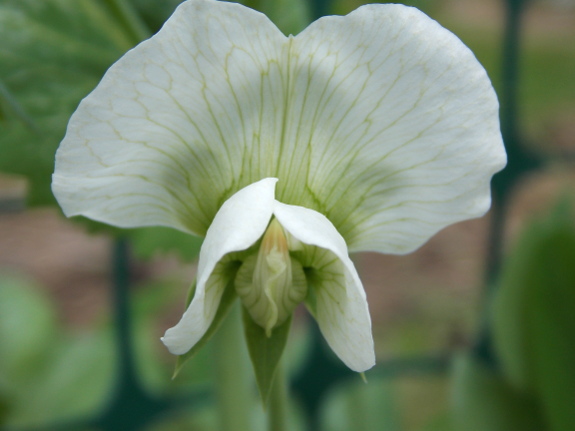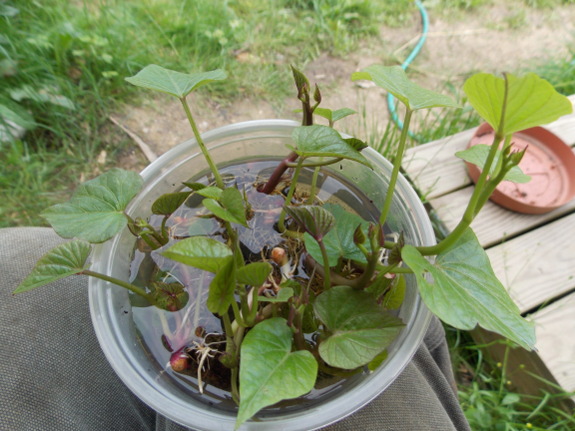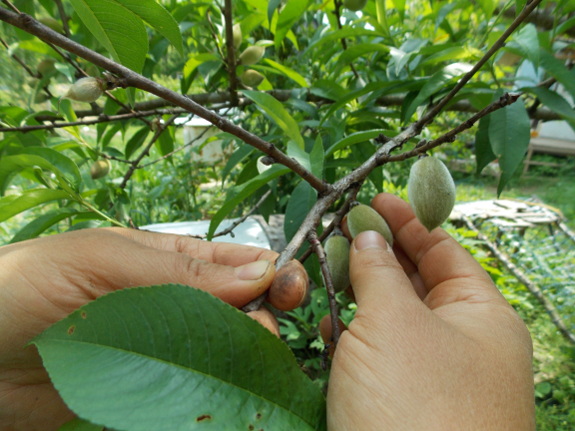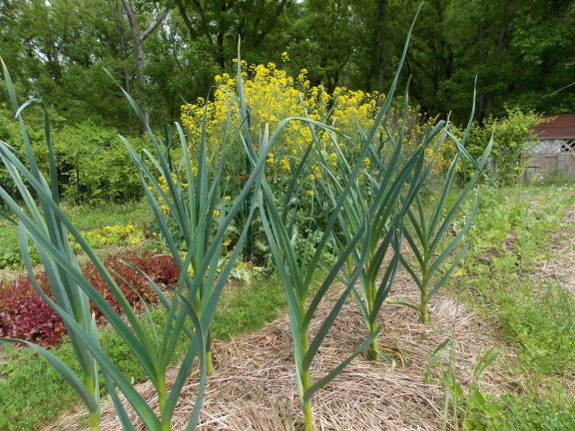
May garden catchup

Even though I've spent
all week talking about bees, most of my efforts have
been in the garden. The elongated spring has put us behind where
we were in years past, but this week turned into summer, prompting me
to play catch up.

First on the agenda ---
planting out everything that has been waiting in the wings until our
last chance of frost passed. Thirty
beautiful tomatoes are now in the ground, all but three gifts and two
homegrown Stupice started under quick
hoops. I had
sprouted some tomatoes inside, but the outside starts were vastly
larger and more vibrant, as usual, so the insiders went on the compost
pile.
Meanwhile, I planted the
first eight sweet potato slips. I generally set these out a few
at a time since they're homegrown and don't all root at
once. My garden plan tells me I only need four more slips to
reach this year's quota, but I think I'm going to plant some extras in
gaps in the forest garden as a summer cover crop. Sweet potato vines
definitely seem to produce at least as much biomass per unit area as
buckwheat does, plus the tubers make great gifts.

I stole a few hours away
from the vegetables to get the apples and peaches thinned. Thinning and pruning
are two of the most important factors in getting delectable fruits, but
are the most often overlooked by home gardeners. Sure, it's tough to pluck
five baby peaches off the tree for every one I keep, but I've learned
the hard way that peaches left too close together end up touching and
are more prone to brown rot infestations. In
addition, breaking off young fruits damaged by Oriental
fruit moths has
helped decrease that pest's population, and also prevents the tree from
pouring energy into fruits that will end up in the compost bucket due
to maggot frass in the middle. (Okay, I just cut out the bad
spots, but still.)
Thinning also helps
prevent the tree from breaking branches under heavy fruit loads, and
reduces your chances for biennial bearing. Finally, thinned trees
produce bigger, tastier fruits. I figure it's well worth the hour
I spent on our largest tree, and the few minutes on each smaller tree,
to get all of those benefits.

What didn't I have time
for this week? Weeding and mulching around seedlings planted
earlier in the year and catching those weeds in the woody perennials
before they get really rooted and hard to pull. Luckily, next
week begins the late May planting lull, so I should have time to catch
up in the areas I got behind on this week while playing catch up from
the weather.
Want more in-depth information? Browse through our books.
Or explore more posts by date or by subject.
About us: Anna Hess and Mark Hamilton spent over a decade living self-sufficiently in the mountains of Virginia before moving north to start over from scratch in the foothills of Ohio. They've experimented with permaculture, no-till gardening, trailersteading, home-based microbusinesses and much more, writing about their adventures in both blogs and books.
Want to be notified when new comments are posted on this page? Click on the RSS button after you add a comment to subscribe to the comment feed, or simply check the box beside "email replies to me" while writing your comment.
- Remove comment
